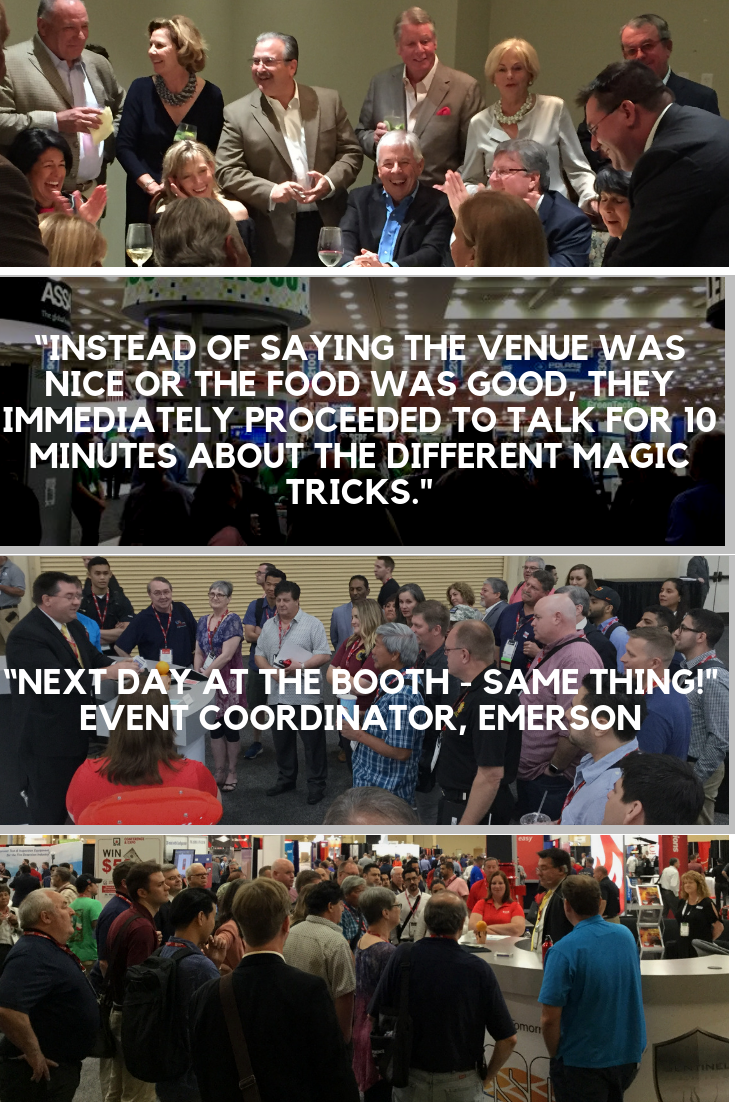Why welcome receptions and networking events fail (And HOw to Make yours A Success!)
This is the most important idea I've shared in a newsletter yet.
This is big BIGGEST REASON welcome receptions and networking events fail.
Each of us has a set of subconscious rules about how we behave in a given situation. These rules cover everything from how we should act to who we should talk to. Everyone has a unique set of rules, and everyone believes that their set of rules is correct.
That set of rules is called a “frame.” When we do things that fit into our frame, we are comfortable. When we do things outside of our frame, we become uncomfortable and immediately want to return to the behaviors that fit within the frame.
So when you see that irritating guy walking around a networking reception giving everyone his business card and pitching his services, he’s operating within his frame. No matter how irritated you are, he thinks he’s doing the right thing.
On the other hand, there are nervous wallflowers who spend the whole night talking to the same three people. They might not meet anyone new, but they believe they are doing exactly what they should be doing at a networking event, too.
This is why most networking events and welcome receptions fail.
Everyone has a different frame and a different understanding of how they should act at an event.
The current crop of popular networking ideas are often counterproductive because they only force people outside of their comfort zones.
Like a rubber band, people immediately go back to their previous beliefs and behavior when we take the force away.
The "new connections" die because 1) people's existing beliefs prevent them from reaching out afterward or 2) their counterparts' existing beliefs program them to reject the outreach.
That makes everyone uncomfortable, frustrated, and even angry. They thought they were there to meet new people, but… apparently nobody else was!
To effectively create networking, we need to transform our attendees into different people who have different beliefs about what's acceptable and effective.
There are four steps to making this happen:
1) We have to interrupt the existing pattern or “break the frame.”
As a magician, I do this by approaching the group,, and shocking and surprising everyone with some fun and engaging magic. I shift the frame from “small talk / cocktail party” to “let’s hang out with this fun magic guy for a minute.”
2) We must create a shared experience among a crowd of people.
While I’m entertaining one group of people, I start inviting nearby people into the show. I break the “just talk to people you know” frame and introduce a “let’s all have some fun together” frame.
As I continue to entertain, I involve more and more people in the magic. Everyone can see the magic, and everyone can participate, so the barriers between the original group of people and new group of people vanish.
3) We must create Equal Business Stature
As I entertain, no one knows how hte magic works. No one knows what’s going other than happen next. Nobody can explain what’s going on.
None of the people in the group has more authority or power than anyone else. They’re all equal members of the audience.
4) We must install a new frame.
As I leave, I remind everyone that I’ll come back to do more magic later, and I invite them “talk amongst themselves” as go entertain someone else. This is a small joke, but it’s also a carefully worded instruction - they now have equal business stature, they have a common/shared experience they can talk about, and they have all been introduced to each other.
It’s now very easy for them to have open and honest conversations with the other people in the group.
Even better, the new frame carries forward long after the magic and the event have ended.
People feel like they’ve been introduced and they have some sense of connection, so it’s easier to start hallway conversations during a conference, start business conversations at a trade show booth, or even do follow-up sales calls after a customer event.
This post has been high-level overview of how frames work at events and how they can make networking events and welcome receptions much more effective. If you’d like to know how something like this might work at your specific event, set an appointment using the button below or call (561) 596 3877.



